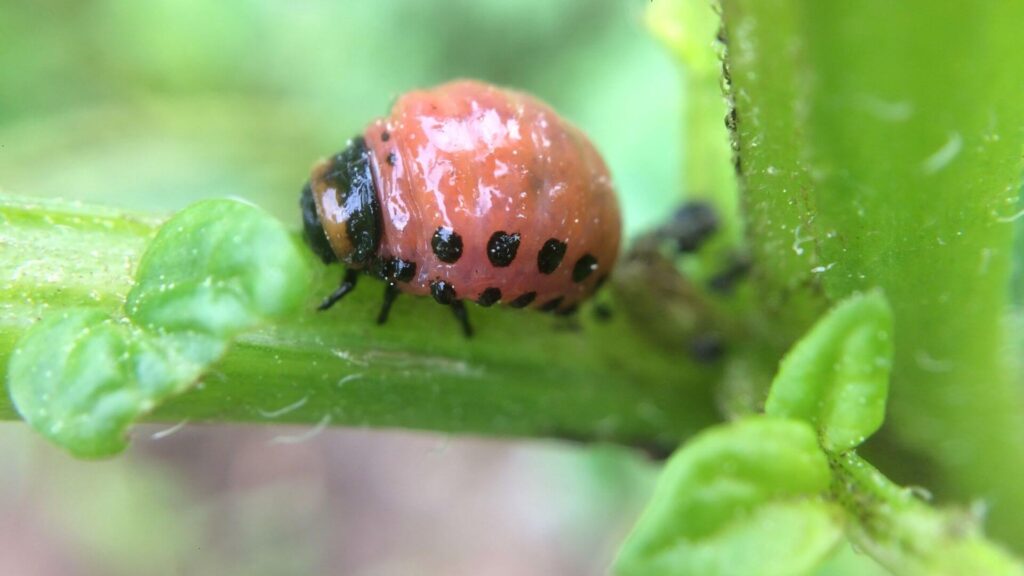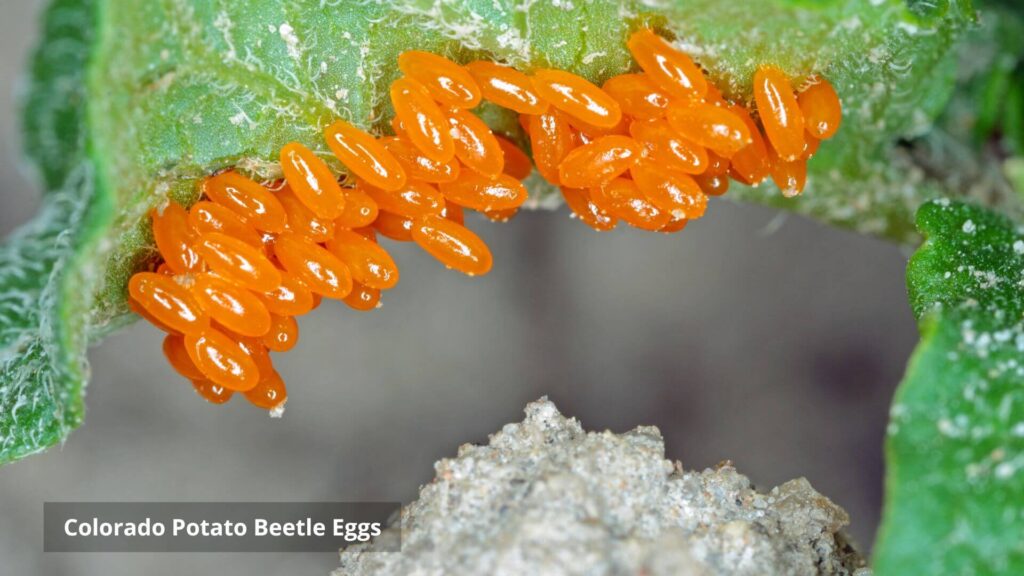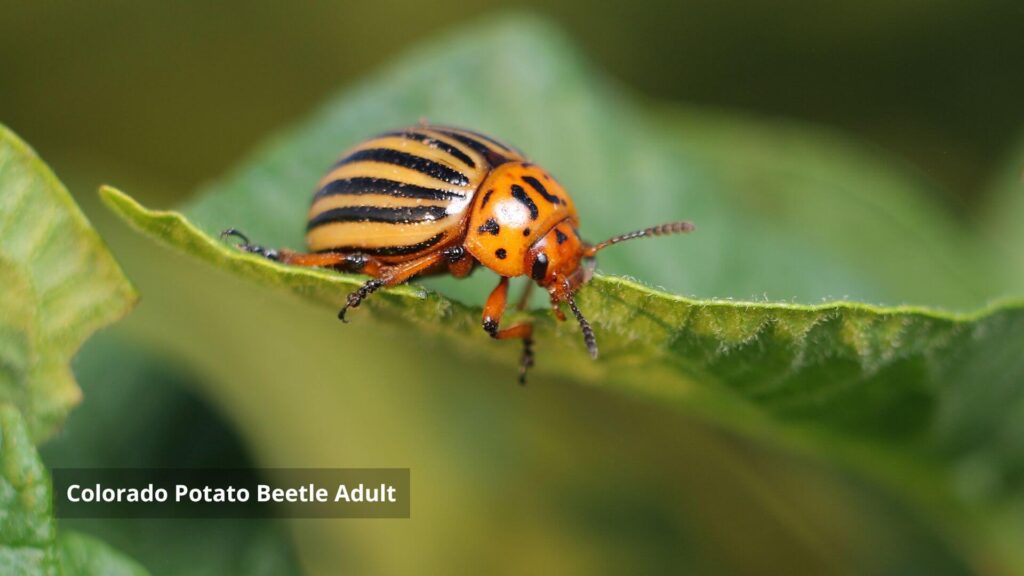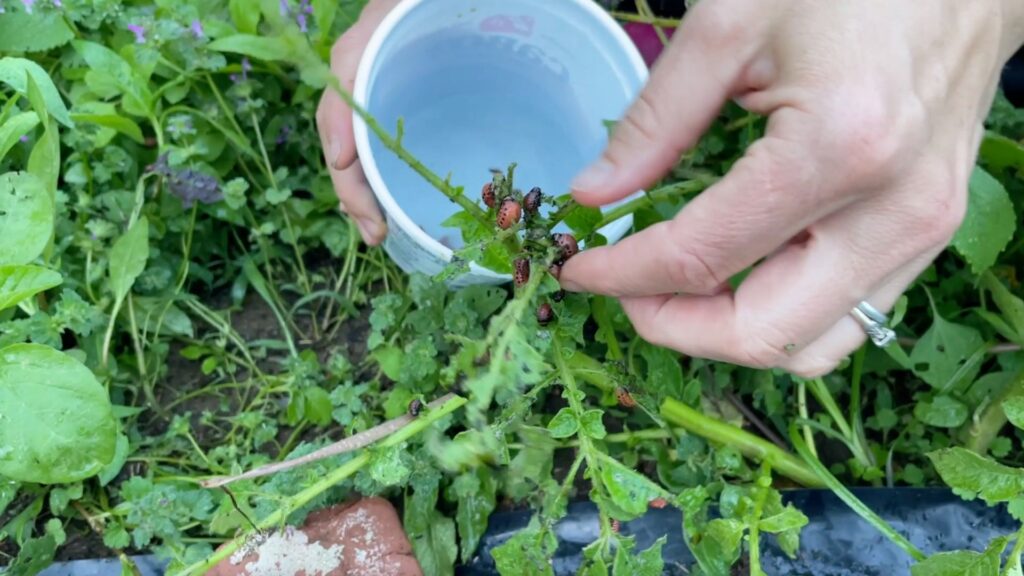Is Something Eating Your Potatoes? Here’s What You Can Do (No Sprays Needed)
Have your potato leaves been eaten?
The culprit could be the little leaf eater below — the larva of the Colorado potato beetle. It’s one of the most destructive potato pests in North America.

In this post, I’ll help you:
- Identify the beetle at different stages of its life cycle
- Understand how it fits into your garden ecosystem
- Take action now to protect your plants without reaching for toxic sprays.
I’ll be using part of the framework I teach in our Poison-Free Pest Control course to tackle these beetles the “beyond organic” way—protecting our potato crop without harming the rest of the ecosystem.
Watch the video or read more below.
Why This Bug Matters (Even If It’s a Pest)
The Colorado potato beetle (Leptinotarsa decemlineata) is native to the western U.S. and naturalized here in the East. It’s part of the food web—important food for animals like birds, toads, and lizards.
My goal isn’t to wipe them out, but to keep the population in check so they don’t wipe out my crops.
If their numbers get out of hand, they’ll move from potatoes to other plants in the nightshade family like tomatoes, peppers, and eggplants.
Step One: Identify
The first step whenever you have a pest problem in your garden is to identify what you are dealing with.
Inside Poison-Free Pest Control, we share a whole toolbox of resources to help you with identification.
The Seek App is one of my favorites.
In the case of Colorado potato beetle, here’s what to look for:
- Skeletonized leaves with only the veins left behind
- Larva are plump, reddish-orange grubs with 2 rows of black spots down each side. They often cluster on leaves.
- Pupa are yellowish or brownish cocoons in the top layer of soil. (You usually don’t see them.)
- Adults have a dome-shaped body (like a ladybug) with 10 black stripes on yellow-orange elytra, or wing covers.
- Eggs are shiny orange or yellow and usually laid in groups on the underside of leaves.

Adults overwinter in soil and emerge in May and June to mate and produce offspring. A female can lay anywhere from 300–500 eggs. The second generation of adults will emerge around mid-July.

What You Can Do Right Now (No Chemicals Needed)
The best control method? Gardener power.
Hand-picking is incredibly effective for small-scale gardens. Here’s how to do it:
- Grab a bucket or bowl with water and a drop of dish soap (breaks surface tension).
- Pick off larvae and adults by hand. (They don’t bite.)
- Drop them in the soapy water.
- Pour the dead insects out for your chickens or in the compost.
If you’re not sure about touching the insects, gloves help. Or you can use a small brush to knock them off.

😬 Fun fact from Ben Knowles on the podcast “There Will Be Bugs” — They squish like Gushers. Ew.
What If There Are Too Many?
If a plant is heavily infested—especially volunteer potatoes that popped up early—you might want to remove the whole plant, larva and all, to keep them from completing their life cycle and moving to your main crop.
Want More Strategies?
In my Poison-Free Pest Control course, we go deeper into sustainable methods to manage pests like the Colorado potato beetle without harming pollinators, soil life, or your family.
Got Tips to Share?
Have you dealt with potato beetles in your garden? I’d love to hear what’s worked for you—drop a comment on the video or reply here.
